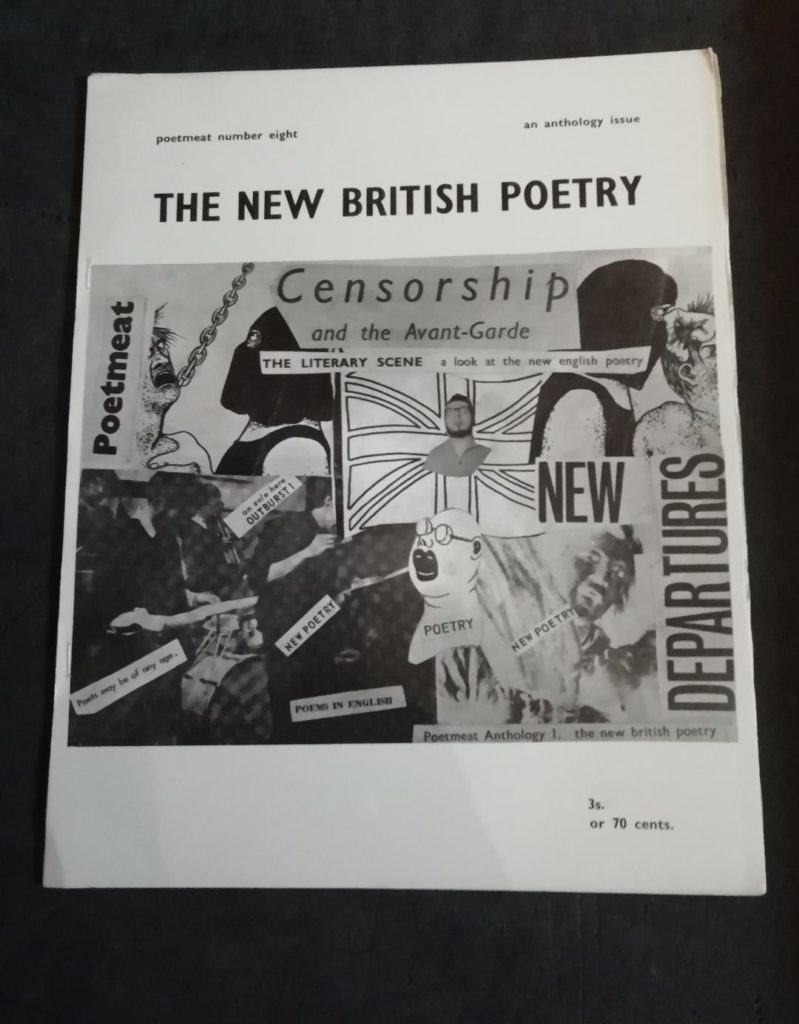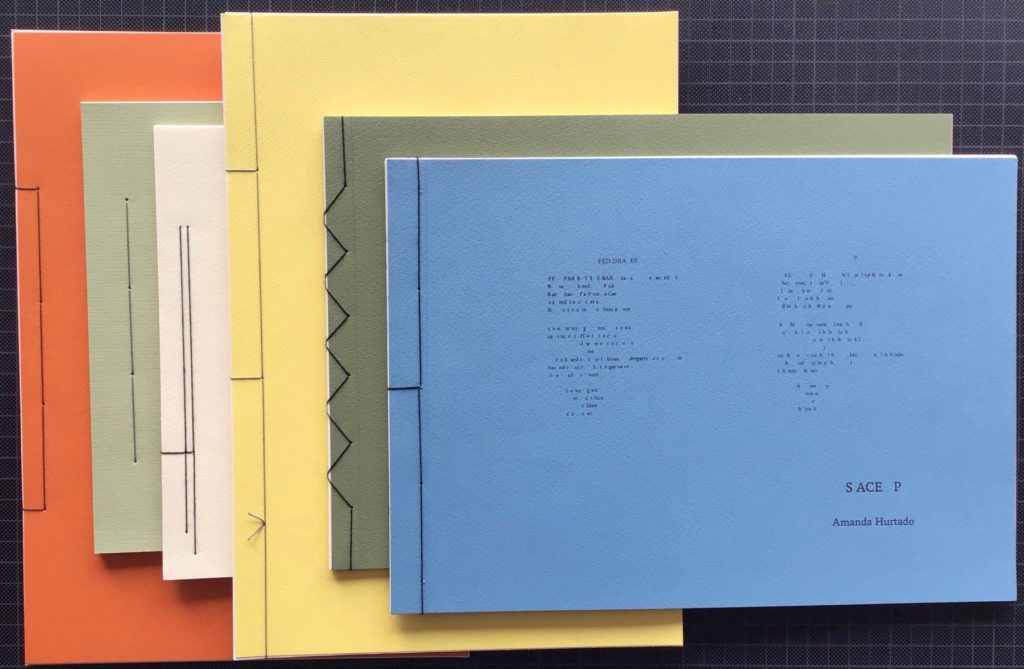It’s time for the annual musings known as Shadows and Reflections. Since so many of our lives were lived in thematic overlap in 2020, we’ve asked our contributors and friends to focus on the small, strange and specific as they look back over the last 12 months. Today it’s the turn of Joe Devlin.

A brief overview of the importance of small presses
The little magazine symposium took place in early March at the revered John Rylands library, Manchester. It managed to combine recollections and readings from poets Tina Morris and Jim Burns, both actively involved in the poetry magazine and small press scene during the 1960s and 70s, with a chance to see examples of original publications held in the collections, such as Ole! And Jeff Nuttall’s My Own Mag.
The two poets provided insight into the production of magazines on limited budgets, with access to mimeographs and photocopiers becoming more readily available, establishing community through distribution, the development of experimental verse on both sides of the Atlantic, police raids, interference with international mail, and the subsequent trial of Dave Cunliffe for printing Arthur Moyse’s Golden Convolvulus.
Poetmeat, edited by Cunliffe and Morris, offered a platform for work often ignored by the mainstream, with Bob Cobbing’s concrete poetry and typestracts by Benedictine monk dsh (Dom Sylvester Houédard) featuring, and publishing, in issue 2, an extract from William Burroughs’ Naked Lunch. As well as being a regular contributor to Poetmeat, Burns was the editor for both Move and Palantir magazines, putting out early works by Black Mountain college poet Larry Eigner and Charles Bukowski. Through his reviews and articles in both The Guardian and Tribune he brought small poetry magazines to the attention of a much wider audience.
The speakers were witty, informative, warm, and humble. They seemed genuinely surprised by the reach and impact their publications — printed in very limited runs and distributed from small industrial towns in Northern England — still have today. Their anecdotes revealed a desire to disseminate work they valued and a conviction to communicate what they deemed important, as Burns said in a recent interview, “I wasn’t looking for names and sometimes rejected work by better-known writers if I didn’t find it interesting.”
A spirit of generosity shone through, from putting American visitors up whilst on small, often self-organised, UK reading tours to providing hands-on support in getting the manually mimeographed printed magazines out on time. Literally keeping the wheels turning.
In a conversation with Judith Hoffberg the artist Lawrence Weiner stated that “With the technology, even back then (the 1960s) — any artist who wanted to publish a book and had something to say could just give up lunch for a couple of months and just send it out.”
This DIY approach is alive and well today. I aim to look at a few individuals, there are many more, who bridge the space between publishing things to be read and making things to be looked at. Those who retain the same ethos as Burns and Morris, putting out what they consider needs to be shared.
Firstly, no press, published by derek beaulieu, a Canadian poet, publisher and Ubuweb’s visual poetry editor. This small press, based in Banff, is responsible for producing over 350 titles since 2005, each one usually printed in runs of 30-80 copies, with the author receiving half of the edition as ‘payment’. It provides a space for experimental work across a range of writing communities, including, but not exclusive to, visual poetry, concrete poetry, and conceptual writing.
An advoke of open access, beaulieu has uploaded all his work as PDFs, believing that “releasing my writing online for free encourages new and unexpected ways of people engaging and responding with the writing; it will encourage experimentation and reaction.”
He continues – “Small press publishing remains, for me, the best way of getting the poetic “news” and supporting writers as they explore the limitations of their own thinking, the edges of their own maps. The small press should not be graduated away from as an author becomes more established; it is a continuous space of experimentation, community, and mentorship.”
Secondly, Moschatel Press, run by the artist Laurie Clark and poet Thomas A. Clark. Established in 1973, Moschatel was responsible for printing titles by Ian Hamilton Finlay and Simon Cutts early on, these days the press predominately publishes the Clarks’ collaborative output. Operating out of Pittenweem, often utilising understated formats such as folded card and pamphlets, these “poem objects” explore how presentation informs reading and meaning, the possibilities of form are of central concern.
As Thomas Clark states – “Reading activates both the page and the book as spaces in themselves. Usually in poetry, the page or the book is a support, a container for the work. But it is possible to utilise both of those as aspects of form.”
The final press is Timglaset, who are based in Malmö, Sweden. Describing themselves as “a publisher of contemporary concrete and visual poetry, asemic writing and other forms at the crossroads of literature and visual art”, Timglast produce limited-edition books. It is worth noting, like beaulieu, they make their out-of-print titles available via free PDFs.
The mimeo printed, handbound, and numbered TYPEWRITTEN series, a collaboration between Petra Schulze-Wollgast and Plaugolt SatzWechsler (Rostock, Germany), highlights contemporary authors and artists who use the typewriter as a creative instrument. Elegant objects, down to the detail of each book having a different saddle stitch finish. Further examples of practitioners whose work operate on the cusp of the written and visual, displaying a continued dialogue with concrete poetry and the tools of the trade.

Attending the event at the library early in the year refocused my interest in the independent nature of various small presses, especially individuals who operate in the gap between art and language. Establishing and growing communities with the circulation of printed material, at a relatively low cost, and the generosity this simple act entails. Highlighting the importance of supporting practitioners on the periphery through publication of their work, potentially introducing them to a wider audience.
All these spaces encourage experimentation; they are places where collaboration and exchange are still appreciated and prized, allowing authors to present their work in a variety of ways, engaging with the physical properties of the object as well as the content. The work carried out by small presses, often operated by one dedicated individual in their own time, with the desire to share ideas being their main motivation, should always be celebrated and cherished.